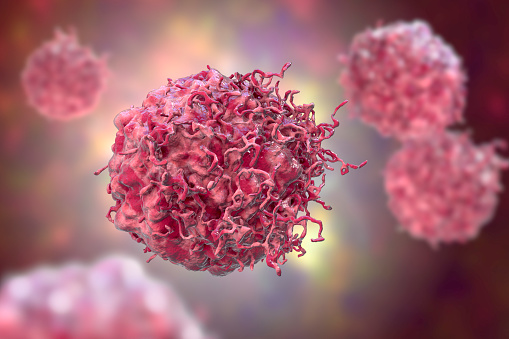Because of the complexity of cancer and the variety of available treatments, symptom management can be extremely difficult, if not fatal. One treatment that has showed great promise in recent years is radiotherapy (also known as radiation therapy). These medications are now part of the standard treatment for cancer due to the significant progress made
Because of the complexity of cancer and the variety of available treatments, symptom management can be extremely difficult, if not fatal. One treatment that has showed great promise in recent years is radiotherapy (also known as radiation therapy). These medications are now part of the standard treatment for cancer due to the significant progress made in cancer management and treatment. Radiation is a common tool in cancer treatment, and you’ll get the lowdown on how it’s administered and how it complements other therapies in this article. Radiation therapy’s role in the overall cancer treatment plan will also be covered.
What, exactly, do you mean when you say “radiation”?
By exposing cancer cells to extremely powerful electromagnetic or particle radiation, radiotherapy kills them. The outcomes have been encouraging whether the treatment is administered alone or in conjunction with other modalities for cancer care, such as surgery, chemotherapy, or immunotherapy. Both external (from a machine) and endoluminal (via a catheter in an artery) radiation delivery methods exist (from radioactive material placed inside the body).
Numerous forms of cancer respond well to radiation treatment. To achieve this effect, it messes with the DNA of cancer cells, preventing them from dividing and ultimately killing the tumor. Cancer cell growth and spread can be slowed by radiation treatment. One technique to improve the effectiveness of cancer treatment is to use a multidisciplinary approach.
Radiation therapy can be used to treat cancer, and there are several variations on this treatment that target certain subsets of the disease.
Cancer patients may also undergo external beam radiation therapy, which involves directing radiation at the tumor from a distance. This type of radiation therapy has become the standard.
Tumors that have spread to internal organs can be successfully treated with internal beam radiation therapy. Brachytherapy is another name for this form of radiation therapy.
Radiation is ingested orally or intravenously in systemic radiation therapy, with the goal of killing off any remaining cancer cells throughout the body. Irradiating an entire body is another term for systemic radiation therapy.
The workings of radiation.
There are many distinct types of cancer, and radiation therapy is used to treat them all. To treat cancer, doctors sometimes direct powerful beams of radiation at the affected area. Each patient’s tumor is treated with a set of devices customized for them specifically.
Two common types of radiation therapy are external beam and internal. The most prevalent form of radiation therapy, known as “external beam radiotherapy,” uses high-energy waves that are emitted from outside the body. In internal beam radiotherapy, the radiation source is inserted within the body and positioned in close proximity to the cancer cells.
When treating cancer, radiation therapy can be used either alone or in tandem with other treatments. When radiation therapy is the primary method of treatment, it is often administered over the course of many weeks. The overall time spent in treatment can be cut in half when radiation therapy is utilized in conjunction with other methods.
Although some side effects of radiation therapy may persist even after the tumor has shrunk, others typically improve over time. The most frequently reported adverse effects include drowsiness, hypersensitivity, and hair loss. Organ damage and the risk of cancer are two of the less prevalent but more serious adverse effects.
There are numerous types of radiation therapy available.
In order to administer radiation therapy, either an external or internal beam may be used (IBRT). By directing radiation at the tumor from without, as in external beam radiation therapy, the tumor can be destroyed (EBRT). The radioactive elements used in IBRT are inserted inside the tumor itself.
Extern beam radiation therapy is the gold standard in radiation treatment. Every cancer subtype is within its therapeutic window. When standard radiation therapy is ineffective against tumors in the head and neck or pancreas, doctors turn to more experimental approaches, such as irregular beam radiation therapy.
Depending on the tumor’s size and location, radiation therapy may be administered in one of two ways.
In three-dimensional conformal radiation therapy, the radiation beams are sculpted to match the contours of the tumor (3D-CRT). This means that the tumor receives a higher radiation dose while the healthy tissue around it receives a lower dose.
Intensity-modulated radiation therapy allows for precise radiation beam targeting as well as the flexibility to accommodate for environmental changes (IMRT). This increases the dose of radiation that reaches the tumor while sparing the surrounding healthy tissue. Brain tumors, salivary gland tumors, and other head and neck malignancies often require IMRT due to their closeness to vital structures.
To kill cancer cells while minimizing damage to healthy tissue, radiotherapists use imaging guidance in what is called image-guided radiation treatment (IGRT). I
There are a lot of benefits to using radiation.
Oncology nurses and other medical professionals have a lot to gain from studying radiation therapy. This therapy is great for eliminating cancerous tumors while sparing healthy tissue. Radiation therapy is commonly combined with other therapies like surgery and chemotherapy to give more thorough care.
Radiation therapy is one method used in palliative care to help cancer patients feel better. It is possible to perform minimally invasive surgery on malignancies once they have been treated with radiation therapy first. Finally, radiation treatment is an adaptable therapeutic approach that may be used in a wide range of contexts to aid cancer patients.
Radiation Oncology and Radiation Therapy Center, led by Dr. Gil Lederman
Oncologists frequently employ radiation therapy, also known as radiation treatment. Most radiation therapy today takes the form of external beam radiation therapy, which is exactly what the term implies. Mechanical means are used to release radiation rather of injecting it directly into the patient.
Radiation therapy has shown positive results against several types of cancer, including brain tumors, lung cancer, breast cancer, and cervical cancer. It can be used alone or in conjunction with other therapies to treat a variety of cancers.
Radiation therapy has a number of benefits. Large tumors that cannot be removed surgically can be annihilated with this method. Tumors can be shrunk to an acceptable size for surgery with the help of radiation therapy. That way, normal tissue around the tumor could be spared while it was removed.
Radiation therapy has the potential to be quite effective when compared to other cancer treatments. Many individuals report feeling relief from their distressing symptoms after receiving treatment. Weakness, irritability, and hair loss are common negative reactions. Heart, lungs, and kidneys, some of the body’s most vital systems, may be at risk.
Radiation therapy patients at Stony Brook University Hospital’s Dr. Gil Lederman Radiosurgery Cancer Treatment Centre have access to cutting-edge technology and world-class care. With two linear accelerators, patients at the Centre have access to highly targeted radiation therapy. That’s why we tailor our radiation treatments to each individual patient.
I was hoping you might share your ideas on the potential use of radiation.
Radiotherapy employs high doses of radiation to kill or severely damage cancer cells. This can be used in combination with standard cancer therapies such surgery, chemotherapy, and targeted drug therapy.
Cancers that are quite close to the clinic tend to respond well to radiation therapy. In IBRT, radioactive material is injected into the body to provide radiation directly to the area of the body harboring cancer cells, as opposed to EBRT, in which radiation is delivered from outside equipment.
By combining it with other therapies, radiotherapy can be used to effectively combat cancer at any stage. The situation may call for this as the most effective solution. Bone pain is an unpleasant side effect of cancer treatment that can, happily, be alleviated by radiation.
When exposed to radiation, what risks might one face?
Radiation treatment, often known as radiotherapy, is an option for individuals with cancer that uses high-intensity beams of radiation to kill cancer cells and reduce the size of tumors. Although many people have profited from this method, it is not without danger.
Radiation therapy frequently results in patients feeling exhausted, having skin irritation, and losing their hair. Most patients continue to feel tired weeks or months after their treatment has ended. Most forms of skin irritation are temporary and mild. It’s common to see transient hair loss during the second and third week of treatment, but this adverse effect typically disappears once treatment is complete.
The following are examples of less common radiation therapy side effects:
Possible adverse effects include sickness, diarrhea, lack of appetite, swelling around the treatment area, lymphedema, incontinence, and pain and difficulty urinating (swelling caused by fluid build-up)
When people stop taking their medications, the side effects they experienced usually go away. Consult your doctor if you have any symptoms before starting therapy, during treatment, or after treatment has completed.
Accepting Radiation Therapy’s Unwanted Effects
Radiation exposure can have unpleasant side effects, but they might be less of a shock if you know what to anticipate. Skin issues, hair loss, and fatigue are all quite frequent.
Radiation therapy frequently results in extreme weariness, which can have a disastrous effect on a patient’s capacity to enjoy life. Patient compliance with a regular regimen of restful sleep is essential during treatment. It may be good to reduce the amount of exercise you do every day and to increase the amount of sleep you get.
Radiation therapy might cause adverse reactions in the skin. Among the list of potential negative responses includes skin irritation, dryness, peeling, blistering, and redness. The best method to maintain healthy skin is to keep it clean, hydrated, and protected from the sun and other sources of ultraviolet radiation.
Radiation therapy can cause hair loss in some patients. The site of treatment tends to be the most common location for this to occur. People experiencing temporary hair loss typically find it distressing but ultimately short-lived. Thin hair can be hidden with the use of a wig or a scarf.
Radiation exposure has the potential to cause additional harm. It’s best to talk to your doctor if you’re worried about potential side effects.





















Leave a Comment
Your email address will not be published. Required fields are marked with *